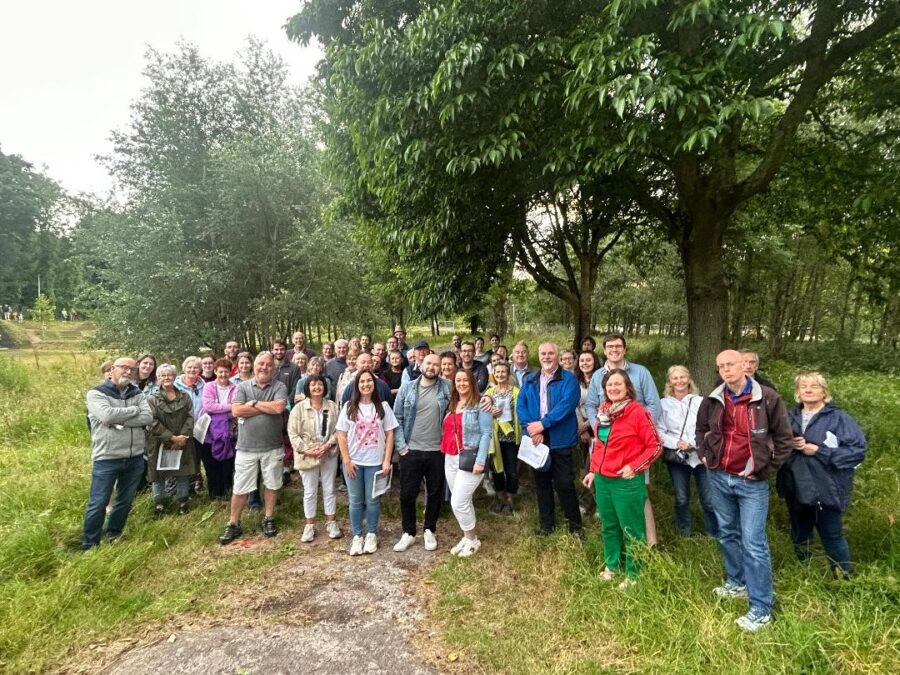
Kieran’s Our City, Our Town Article,
Cork Independent, 22 August 2024
Kieran’s National Heritage Week Tours, 17-25 August 2024
My 2024 National Heritage Week historical walking tours continue. I am half way through my programme of tours. All are free and there is no booking required.
Thursday 22 August 2024, The Lough and its Curiosities; historical walking tour; meet at green area at northern green of The Lough, entrance of Lough Road to The Lough, Lough Church end; 6.30pm.
This walking tour explores the Lough, its heritage and the rich surrounding history of this neighbourhood of the city. This amenity has witnessed eighteenth century market fairs as well as ice skating to nineteenth century writers and nursery gardens to twentieth century cycling tournaments and the rich and historic market garden culture.
Friday 23 August 2024, Douglas and its History, historical walking tour in association with Douglas Tidy Towns; Discover the history of industry and the development of this historic village, meet in the carpark of Douglas Community Centre, 6.30pm.
The story of Douglas and its environs is in essence a story of experimentation, of industry and of people and social improvement. The story of one of Ireland largest sailcloth factories is a worthwhile topic to explore in terms of its aspiration in its day in the eighteenth century. On 1 June 1726, the Douglas Sailcloth Factory is said to have been founded by a colony of weavers from Fermanagh. The eighteenth century was a golden age for wooden sailing ships, before the 1800s made steam and iron prerequisites for modern navies and trading fleets. The era was also a golden age too for maritime exploration, Douglas in its own way added in part to this world of exploration.
Douglas Village is lucky that it has been written about in depth by local historians in the 1980s and 1990s – scholars such as Con Foley and Walter McGrath – both of whom shone a huge spotlight on the depth and range of material available. Con Foley’s book on the history of Douglas shows his love of place and his participation in sitting down for years, penning notes, walking the ground, using ordnance survey maps and pondering on and mapping interconnections between the different memories of families active in the village and environs through time.
Saturday 24 August 2024, The City Workhouse, historical walking tour; learn about Cork City’s workhouse created for 2,000 impoverished people in 1841; meet just inside the gates of St Finbarr’s Hospital, Douglas Road, 1.30pm.
The Cork workhouse, which opened in December 1841, was an isolated place – built beyond the toll house and toll gates, which gave entry to the city and which stood just below the end of the wall of St. Finbarr’s Hospital in the vicinity of the junction of the Douglas and Ballinlough Roads.
Written in depth over the years by scholars such as Sr M Emmanuel Browne and Colman O’Mahony, many in-depth primary documents have survived to outline the history of the hospital. What shines out are the memories of how people have struggled at this site since its creation in 1841. Other topics perhaps can also be pursued here such as the history of social justice at the site, why and how society takes care of the vulnerable in society and the framing of questions on ideas of giving humanity and dignity to people and how they have evolved over the centuries.
TheHospital serves as a vast repository of memories, symbolism, iconography and cultural debate. Standing at the former workhouse buildings, which opened in December 1841, there is much to think about – humanity and the human experience. The architect to the Poor Law Commissioners in Ireland from 1839 until 1855 was George Wilkinson. Nearly all the workhouses, accommodating between 200 and 2000 persons apiece, were designed in a Tudor domestic idiom, with picturesque gabled entrance buildings which contracted the size and comfortlessness of the institutions which lay behind them. By April 1847 all 130 workhouses were complete, the Douglas Road being one of the first.
Sunday 25 August 2024, Sunday’s Well historical walking tour; discover the original well and the eighteenth century origins of the suburb, meet at St Vincent’s Bridge, North Mall end, 1.30pm.
Sunday’s Well was a famous landmark through the ages and the adjoining district took its name from the well. In 1644, the French traveller M de La Boullaye Le Gouz, visited Ireland. In the account of his journey he writes: “A mile from Korq [Cork] is a well called by the English, Sunday Spring, or the fountain of Sunday, which the Irish believe is blessed and cures many ills”.
Walk from Wise’s Hill to the heart of Sunday’s Well and learn about the development of an eighteenth century suburb. This tour begins at the elegant house at the junction of the North Mall and Wise’s Hill, which was the residence of the distiller Francis Wise. It is a beautiful detached five-bay three-storey former house, built c. 1800, now in use as a university building. The building retains interesting features and materials, such as the timber sliding sash windows, wrought-iron lamp bracket arch, and interior fittings. The North Mall distillery was established on Reilly’s Marsh around 1779, and by 1802 the Wise brothers were running the firm. Whiskey production was another significant industry in Cork from the late eighteenth century.
Caption:
1267a. Group on a recent walking tour of The Marina by Kieran McCarthy.